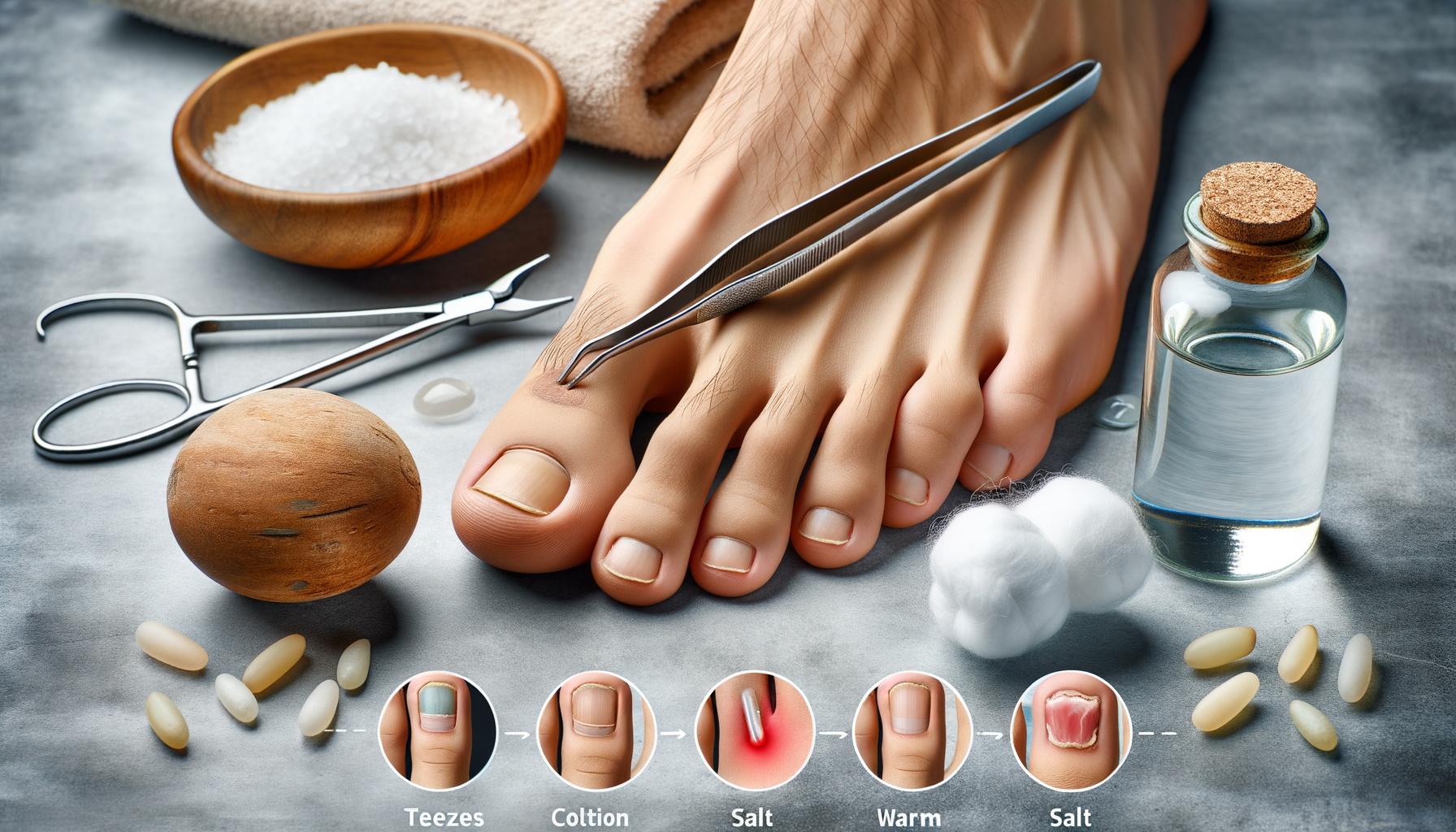Introduction to Ingrown Toenails
Ingrown toenails are a common yet painful condition that affects many individuals. This occurs when the edge of the toenail grows into the skin, leading to discomfort, swelling, and sometimes infection. Understanding how to treat ingrown nails effectively can alleviate pain and prevent further complications. By delving into the causes and exploring home remedies, individuals can manage this condition with greater ease.
How to Treat Ingrown Nails
Treating ingrown nails requires a careful approach to avoid exacerbating the issue. The first step is to soak the affected foot in warm water for about 15 to 20 minutes. This helps soften the skin and the nail, making it easier to manage. After soaking, gently lift the nail edge with a clean piece of cotton or dental floss to relieve pressure on the skin. It’s crucial to maintain proper hygiene during this process to prevent infection.
In some cases, over-the-counter pain relievers can be used to manage discomfort. If the ingrown nail is severe or shows signs of infection, such as redness, pus, or increased swelling, it is advisable to seek medical attention. A healthcare professional may perform a minor procedure to remove part of the nail or prescribe antibiotics if an infection is present.
Preventive measures, such as wearing properly fitting shoes and trimming nails straight across, can also play a significant role in treating and preventing ingrown toenails.
Causes of Ingrown Toenails
Understanding the causes of ingrown toenails can aid in prevention and treatment. One of the most common causes is improper nail trimming. Cutting nails too short or rounding the edges can encourage the nail to grow into the skin. Additionally, wearing tight or ill-fitting shoes can put pressure on the toes, increasing the likelihood of nails growing improperly.
Other contributing factors include genetic predisposition, where the shape of the nail or the nail bed makes one more susceptible to ingrown toenails. Furthermore, injuries to the nail or toe, such as stubbing your toe or dropping something heavy on it, can also result in an ingrown nail.
Understanding these causes helps in adopting preventive measures, such as choosing comfortable footwear and practicing proper nail care.
Home Remedies for Ingrown Toenails
For those seeking natural solutions, several home remedies can provide relief for ingrown toenails. One effective method is soaking the foot in a mixture of warm water and Epsom salt. This not only softens the skin but also reduces inflammation. After soaking, gently massage the area to alleviate discomfort.
Another home remedy involves using apple cider vinegar. Its antiseptic properties can help prevent infection. Soak a cotton ball in apple cider vinegar and apply it to the affected area for several minutes.
Additionally, applying a topical antibiotic ointment can protect against infection, especially if the skin is broken. It’s important to keep the foot clean and dry, and to wear open-toed shoes when possible to reduce pressure on the toe.
Conclusion: Managing Ingrown Toenails
Ingrown toenails, while often painful, can be effectively managed with the right approach. By understanding how to treat ingrown nails and recognizing the causes, individuals can take proactive steps to prevent this common condition. Home remedies offer a natural way to alleviate symptoms, but medical intervention may be necessary in severe cases. Prioritizing proper foot care and hygiene is essential in maintaining healthy toenails and avoiding future complications.




Leave a Reply